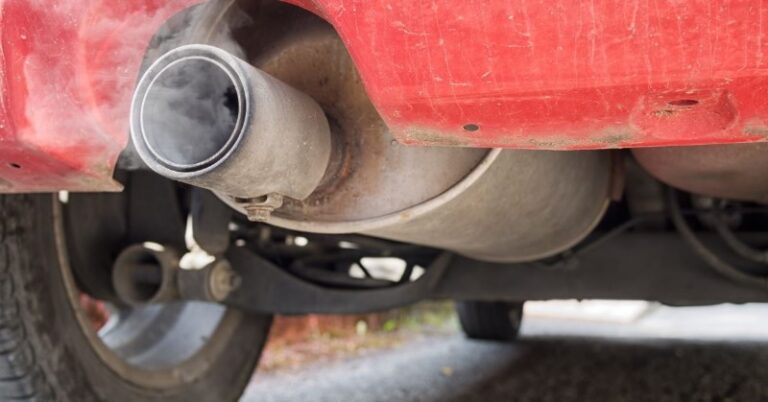Octane rating is a measure of a fuel’s resistance to pre-ignition, or knocking, in an engine. While using an octane rated higher than your vehicle’s manufacturer recommendation is not harmful, it may provide some benefits in certain situations.
Benefits of Using Higher Octane Fuel
- Improved Engine Performance: Higher octane fuels can improve performance in vehicles with high compression ratios or turbocharged engines. This is because these engines require fuel that is more resistant to detonation, which can damage the engine.
- Reduced Emissions: In some cases, using a higher octane fuel can reduce emissions by decreasing the amount of unburned fuel that escapes from the engine.
- Extended Engine Life: Using the correct octane fuel can help prevent engine damage and extend the life of your vehicle.
Considerations for Using Higher Octane Fuel
- Cost: Higher octane fuels are generally more expensive than lower octane fuels.
- Lack of Benefit: If your vehicle does not require a higher octane fuel, using one will not provide any additional benefits and may be a waste of money.
- Potential Engine Damage: Using a fuel with an octane rating that is too low for your vehicle can lead to engine damage.
Should You Use a Higher Octane Fuel?
The best way to determine if you should use a higher octane fuel is to consult your vehicle’s owner’s manual. The manufacturer will recommend the optimal octane rating for your specific vehicle based on its engine design and performance requirements.
Other Factors to Consider
- Driving Conditions: If you are driving in extreme conditions, such as towing a heavy load or driving in mountainous areas, you may benefit from using a higher octane fuel.
- Engine Modifications: If you have modified your engine, you may need to use a higher octane fuel to prevent knocking.
- Fuel Additives: Some fuel additives can increase the octane rating of fuel. However, it is important to use only additives that are approved by your vehicle’s manufacturer.
Using an octane rated higher than your vehicle’s manufacturer recommendation is not harmful, but it may not be necessary. Consulting your vehicle’s owner’s manual is the best way to determine the optimal octane rating for your specific vehicle.
FAQ: Using an Octane Rating Higher Than Your Vehicle’s Recommendation
Q: Is it harmful to use an octane rating higher than my vehicle’s recommendation?
A: No, using a higher octane rating than recommended is not harmful to your vehicle. However, it may not provide any significant benefits either.
Q: Why do certain vehicles require higher octane fuel?
A: Vehicles with high compression ratios or turbocharged engines typically require higher octane fuel to prevent pre-ignition (knocking or pinging).
Q: What are the benefits of using higher octane fuel?
A: In specific situations, higher octane fuel can improve performance and reduce emissions during heavy loads. It may also extend vehicle life and prevent engine damage if used in vehicles designed for it.
Q: Why is it not always beneficial to use higher octane fuel?
A: Unless specified by the manufacturer, using higher octane fuel than recommended does not improve performance and wastes money.
Q: How do I know what octane rating my vehicle requires?
A: Refer to your vehicle’s owner’s manual or check the fuel filler door for the recommended octane rating.

| Category | Characteristics | Advice/Key Points |
|---|---|---|
| Vehicle Dynamics and Control | Acceleration, braking, cornering | Understand principles, recognize effects of speed, road conditions, weight |
| Tire pressure | Maintain proper pressure for handling and safety | |
| Suspension system | Ensure proper functioning for stability and control | |
| Defensive Driving Techniques | Anticipate hazards, maintain following distance, scan road, check mirrors | |
| Hazard Recognition and Risk Management | Identify potential hazards, assess risk, use defensive techniques to mitigate | |
| Roadway Infrastructure and Traffic Patterns | Roadway types | Understand speed limits, traffic regulations for different roads |
| Traffic signals | Follow signals, stop signs, and lane markings | |
| Construction zones, road closures, weather | Be aware of potential traffic disruptions | |
| Impaired Driving | Alcohol/drug influence | Recognize dangers, understand legal consequences |
| Signs and symptoms | Identify impaired drivers and report to law enforcement | |
| Distracted Driving | Cell phones, texting | Avoid distractions, limit passengers and conversations |
| Seat belts | Ensure all passengers are buckled up | |
| Vehicle safety | Check vehicle is safe to drive before operating | |
| Speed Management | Obey speed limits, adjust based on conditions | |
| Octane Ratings and Vehicle Performance | Octane rating | Measure fuel’s resistance to pre-ignition (knocking) |
| Octane rating choice | Use recommended octane for optimal engine performance | |
| Regular gasoline (87 octane) | Suitable for most vehicles under normal conditions | |
| Midgrade gasoline (89-90 octane) | Can improve performance with heavy loads | |
| Premium gasoline (91-94 octane) | Required for high-performance vehicles |








